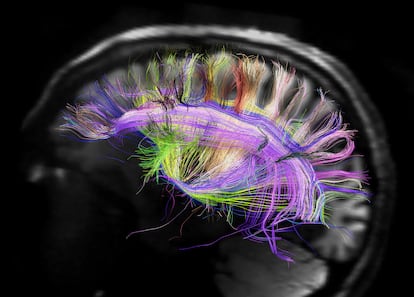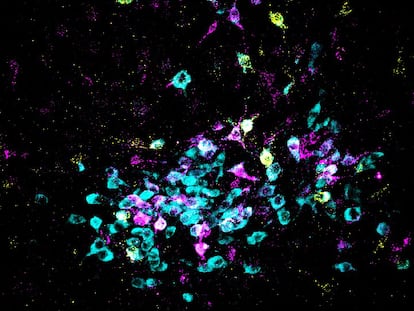Pavlov saw it first: How emotions hijack our behavior
Humans react emotionally to names, images, places or things that we are not familiar with, often without knowing or fully understanding why

For most people, the concept of a conditioned reflex only conjures up the image of Pavlov’s dog salivating at the sound of a bell signaling the arrival of food. But, far from a seemingly simple laboratory anecdote, Ivan Pavlov quickly understood — like many great scientists after making a discovery — the significance of these reflexes in everyday life. So profound was this realization that the Russian scientist unexpectedly altered his planned speech on digestion — a topic for which he later received the Nobel Prize — at the International Congress of Medicine in Madrid in 1903 to discuss his recent findings. For the first time before a scientific audience, he presented the concept of conditioned reflexes, which he originally referred to as “psychic secretions.”
Humans react emotionally, experiencing positive or negative feelings toward names, images, or objects with which they may not be familiar, often without fully understanding the reasons behind these feelings. Those who harbor animosity or affection toward a particular individual — be it a politician or an athlete — or toward a medium, a melody, a piece of art, or a specific city or place, may find it difficult to articulate logical or convincing reasons for these emotions. Much like Pavlov’s dog, these emotions hold significant power; they serve as conditioned stimuli or reflexes that can hijack our behavior, often compelling us to act in ways we may not consciously choose.
Neuroscience has uncovered the mechanisms underlying conditioned reflexes, also known as classical or Pavlovian conditioning, notably studied by American researcher Joseph LeDoux in laboratory rats. In his foundational experiment, an acoustic tone is played just before the animal receives a mild electric shock to its paws through the bars of its cage. After several repetitions of this tone-shock sequence, the rat begins to associate the tone with the impending shock. Consequently, upon hearing the tone, it becomes motionless, effectively learning that the sound signals the imminent arrival of the electric shock, which triggers a fear response — a form of emotional memory. What starts as a neutral stimulus — the tone — transforms into a conditioned stimulus capable of eliciting fear in the rat, even when it is not followed by the electric shock.
The changes induced by this fear learning occur in the amygdala, a structure located in the temporal lobe of the mammalian brain. This is where the neurons responsible for processing tone information converge with those carrying information about the electrical shock. As this convergence happens repeatedly, the synapses, or connections, between these neurons are strengthened, enhancing their ability to activate additional neurons in the amygdala. These activated neurons then influence other parts of the brain to elicit the fear response, which includes the animal’s immobility, an increased heart rate, and the release of hormones such as adrenaline and corticosterone from the adrenal glands into the bloodstream. This combination of behavioral and physiological responses simultaneously affects the animal’s cerebral cortex, generating or intensifying a feeling of fear that is presumably similar to what humans experience in comparable situations.
This mechanism, universal among mammals, explains why people can experience emotional responses of fear when a dangerous situation, whether real or imagined —such as a car accident, job loss, or breakup — is associated in the brain’s amygdala with specific people or places. Consequently, an emotional memory is formed, causing those associated stimuli to evoke fear or animosity in the future whenever they are recalled or encountered, even without re-experiencing the original negative situation. This conditioned emotion — which can also arise in response to positive events or circumstances — effectively hijacks our behavior, leading us to avoid or distance ourselves from the people or places linked to the original negative conditioning. Pavlov recognized this phenomenon before anyone else.
Sign up for our weekly newsletter to get more English-language news coverage from EL PAÍS USA Edition
Tu suscripción se está usando en otro dispositivo
¿Quieres añadir otro usuario a tu suscripción?
Si continúas leyendo en este dispositivo, no se podrá leer en el otro.
FlechaTu suscripción se está usando en otro dispositivo y solo puedes acceder a EL PAÍS desde un dispositivo a la vez.
Si quieres compartir tu cuenta, cambia tu suscripción a la modalidad Premium, así podrás añadir otro usuario. Cada uno accederá con su propia cuenta de email, lo que os permitirá personalizar vuestra experiencia en EL PAÍS.
¿Tienes una suscripción de empresa? Accede aquí para contratar más cuentas.
En el caso de no saber quién está usando tu cuenta, te recomendamos cambiar tu contraseña aquí.
Si decides continuar compartiendo tu cuenta, este mensaje se mostrará en tu dispositivo y en el de la otra persona que está usando tu cuenta de forma indefinida, afectando a tu experiencia de lectura. Puedes consultar aquí los términos y condiciones de la suscripción digital.
More information
Últimas noticias
Most viewed
- Christian Louboutin: ‘Young people don’t want to be like their parents. And if their parents wear sneakers, they’re going to look for something else’
- ‘El Limones’ and the growing union disguise of Mexican organized crime
- Cartels in Mexico take a leap forward with narco-drones: ‘It is criminal groups that are leading the innovation race’
- ‘We are dying’: Cuba sinks into a health crisis amid medicine shortages and misdiagnosis
- The low-cost creative revolution: How technology is making art accessible to everyone











































